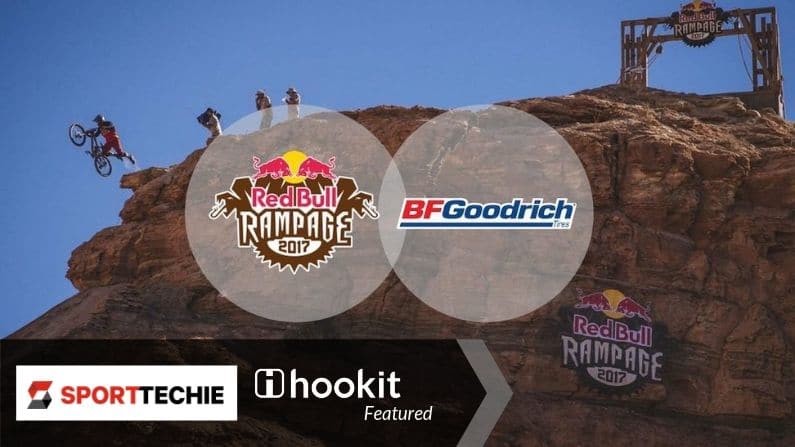Carrie Woodward is fully aware that in this day and age, the way Michelin connects with an audience that is younger and more diverse than ever before is critical.
As Michelin’s global partnership director, Woodward watches with amazement how quickly a new generation of consumers is able to digest and process information. Given the vast choices those consumers have and the split-second nature in which they move from one fascination to another, Woodward understands that the messaging Michelin is sending out must not only be effective, but authentic.
Yet, how major brands like Michelin track the effectiveness of sponsorship dollars they are spending has also never been so vital. After years of manually attempting to analyze how the brand’s messaging was being consumed, Michelin turned to Hookit to better grasp the effectiveness of its sponsorship efforts.
The results have been staggering.
In the past, Michelin operated within a much more traditional sporting landscape. But now as a strategic partner with Red Bull Media House, Michelin sponsors major events being viewed by a much more extreme sports audience and sponsors some of on- and off-road racing’s biggest names such as Bryce Menzies, Rob MacCachren, and RJ Anderson.
Because of the fan base generated at Michelin sponsored events like Crashed Ice and Red Bull Rampage, the opportunities to keep the brand in front of a diverse audience have provided Michelin with the chance to engage with fans like never before.
But that makes how Michelin goes about reaching the audience even more important.
“It’s critical because now with the Internet, we can reach a global audience,” Woodward said.
“So we use the data that’s coming in from Hookit to figure out how can we best work with these athletes and these events and these partners to get the right content in the right place and then to have the right people post it, because we know the content has the potential to grow our brand and reach a global audience.”
By using Hookit, Woodward and her colleagues can put engagement metrics and other forms of sponsorship data to work. Whether Michelin’s audience is connected to the brand through the social media channels of the athletes’ Michelin sponsors or through any one of the various events Michelin has linked its name to, vital information is coming from a countless number of sources. In the past, athletes such as Anderson, MacCachren and Menzies would simply tag their sponsors in social media posts. But now, because brands like Michelin can work with their athletes to pass along more effective messaging, engagement—with both the athlete and Michelin—have grown exponentially.
Kimberly Cook, the Chief Revenue Officer at Hookit, realizes that at times, such heavy doses of data can be overwhelming and sometimes paralyzing. But when brands are able to understand the importance of being in alignment with rights holders, putting that same data to work makes getting the most out of sponsorship opportunities much more viable.
“The more data that is out there, the more reliably brands are going to know what the return on investment is going to be,” Cook said.
With Hookit, Michelin was not only able to track the data, but it was suddenly able to analyze performance trends with how the brand was improving in its digital and social media efforts as opposed to the more traditional media channels Michelin had used in the past.
Woodward is now able to see what fan engagement with an event or athlete’s social media accounts meant for Michelin and made helping athletes project the kind of messaging the brand was attempting to convey to such a large audience easier.
And for a brand that just started selling to a global market in 2016, better messaging led to better business performance. Operating within a popular sporting universe, Cook said, also factors into the success Michelin has found.
“Sports still captures that moment that people want to be associated with. The ability for a brand to be part of that and part of that excitement and the amplification that sponsorship brings is huge,” Cook said. “As long as the ambassadors are presenting the brand in a meaningful way and they are enhancing the fan experience, then I think you have the right formula.”
For Woodward, effectively making the most of sponsorship dollars continues to be an ever-evolving process. Sponsorship is more metric-driven than ever, which makes understanding what the data actually means more important than ever. Hookit is able to present data to brands in nearly real time, which keeps brands like Michelin on top of what is happening with its messaging almost in real time.
Hookit has also helped Woodward turn sponsorships into partnerships, which has allowed Michelin and its rights holders to work together to reach the same goal.
Because that’s the case, Woodward and her colleagues are able to be much more strategic as to how they plan out sponsorship deals. More than ever before, the ability to track how brands are performing has changed the way Michelin is doing business and how it is able to put its sponsorship dollars to work.
“I wouldn’t say that it’s just about budget right now,” Woodward said. “It’s also about the fact that there are so many choices out there. Even if I had $1 million to spend, I would still have to make choices about where to put it. Having this type of data at this level really helps to make those decisions.”
About Hookit: A pioneer in the spontech space, Hookit is the leading single source platform for quantifying sports sponsorship value across all forms of media. Hookit works with brands and rights holders to expand their sponsorship intelligence, allowing them to buy and sell sponsorships more effectively.
This post originally appeared on Sporttechie.
Request a Demo – Hookit has the best business intelligence tools for sports sponsorship analytics and valuation of social and digital media for sports. Request your free brand demo today and see for yourself just how powerful #spontech can be.


